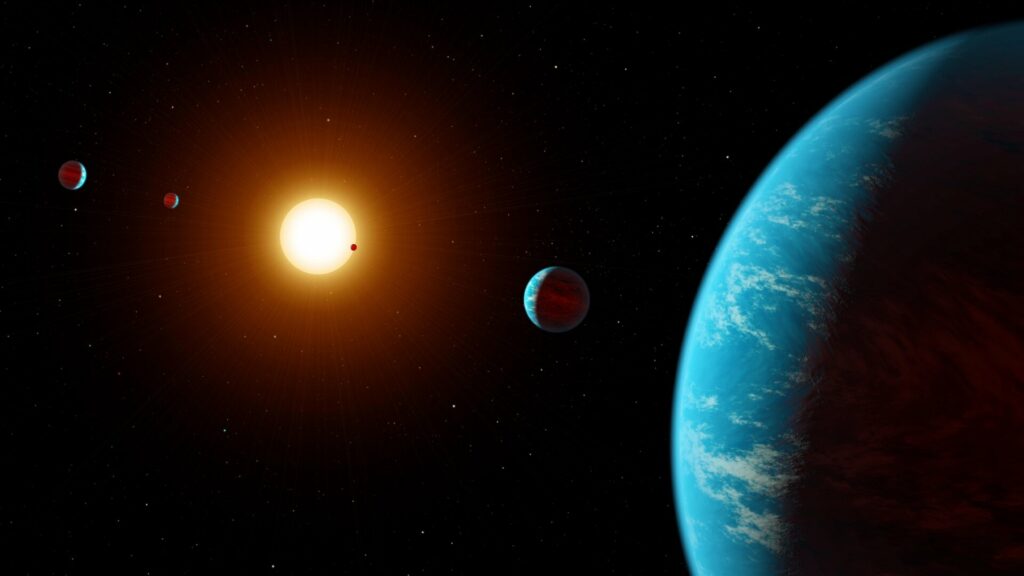A team of Spanish astronomers has announced the discovery of five exoplanets orbiting the orange dwarf HD 23472. The find is interesting because two of the newly discovered exoplanets belong to the rare class of super-Mercuries.

HD 23472 is an orange dwarf. It is located at a distance of 127 light-years from the Sun in the direction of the constellation Reticulum. In the period from 2019 to 2021, researchers obtained 104 spectra of the system using the ESPRESSO spectrograph installed on the ESO’s Very Large Telescope.
During the subsequent analysis of the data, astronomers were able to identify disturbances in the radial velocity of the star caused by the presence of five invisible companions. Their existence was later confirmed by the TESS and CHEOPS telescopes, which recorded transits of exoplanets.
The five exoplanets of the HD 23472 system have orbital periods of 3.98; 7.9; 12.16; 17.67 and 29.8 days. Their radii are 0.75; 0.82; 1.13; 2.01 and 1.85 Earth radii. The two inner exoplanets are of the greatest scientific interest. Thanks to ESPRESSO, scientists were able to determine that their masses are 0.54 and 0.76 Earth masses. This gives an average density of 7.5 g/cm3. Thus, they belong to a very rare class of super-Mercuries — bodies that resemble our Mercury in their internal structure.
The fact is that Mercury is very different from the rest of the stone planets of the Solar system. Most of its internal volume is occupied by the core. There are theories that the planet lost most of its mantle as a result of a powerful collision. The discovery of similar bodies among other stars suggests that this mechanism worked in other systems as well.
As for the three remaining exoplanets, they are super-Earths. Analysis of the available data suggests that a significant part of their mass is accounted for by gases and/or water.
According to https://phys.org
Follow us on Twitter to get the most interesting space news in time
https://twitter.com/ust_magazine

